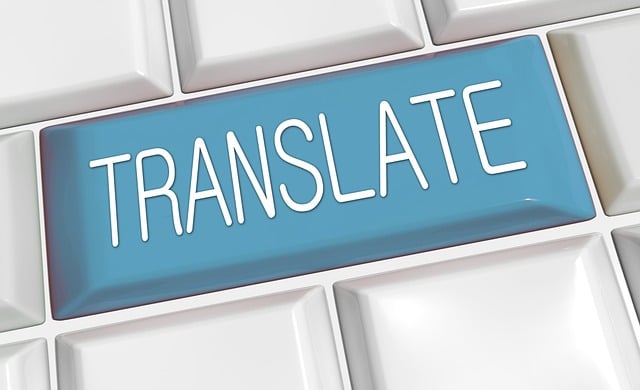Identifying unique translation needs is key when choosing software. Consider artistic freedom, user-friendliness, glossary management, workflow compatibility, and file formats. Cloud-based solutions manage large texts. Choose software aligning with specific requirements for accurate, consistent translations across industries, focusing on intuitive interfaces, robust memory functions, advanced editing tools, and strong security. Test real-world accuracy handling complex structures and nuanced meanings. Support various file formats, MTM, post-editing, and integration capabilities. Explore [Your Brand] for accredited translation applications.
Choosing the ideal translation software is a critical step towards efficient communication across languages. This guide will help you navigate the process by first understanding your unique translation needs. We’ll then explore the diverse range of software available, from machine translations tools to professional human translators’ platforms. Key features to consider and methods for evaluating and testing these tools are also covered, ensuring you make an informed decision that suits your specific translation requirements.
- Understanding Your Translation Needs
- Types of Translation Software Available
- Key Features to Look for in Translation Tools
- Evaluating and Testing Translation Software
Understanding Your Translation Needs

Understanding your specific translation needs is the first step to choosing the perfect software. Whether you’re a professional translator, a student learning a new language, or a content creator looking to subtitle your videos, identifying your requirements is key. For instance, those focusing on artistic freedom and creative expression might require tools that allow for more nuanced handling of complex sentence structures. Students with intermediate language skills may prefer user-friendly interfaces and features designed for rapid learning.
If you’re working with technical documents or specialized terminology, a translation software with a robust glossary management system will be invaluable. Even the best machine translation tools can struggle with idiomatic expressions, so consider your target audience and whether you need human review or editing to ensure accuracy. Don’t forget to assess the software’s compatibility with your existing workflow and preferred file formats. And if you’re managing large volumes of text, cloud-based solutions offering seamless collaboration could be a game-changer. Give us a call at conferencing translation machine translation to discuss further how these factors align with your unique needs.
Types of Translation Software Available

The world of translation software offers a diverse range of options to cater to various needs, from simple word-for-word translations to complex linguistic adaptations. These tools have revolutionized how we approach foreign language comprehension, making it more accessible and efficient. One primary category is machine translation (MT) software, which utilizes advanced algorithms to translate text quickly. This technology has come a long way, providing accurate results for everyday communication and even handling intricate tasks with remarkable precision in many cases.
Another type worth mentioning is professional translation software, designed with an emphasis on quality and adaptability. These platforms often include features like term base management, enabling consistent terminology usage across projects, and advanced editing tools to refine translations, especially when dealing with complex sentence structures. Some software even offers AI-driven suggestions for improved term precision, ensuring your translated content aligns with industry standards. Find us at conferencing translation machine translation for a comprehensive understanding of these options.
Key Features to Look for in Translation Tools

When selecting a translation software, consider key features that align with your specific needs. Firstly, reusing translated content seamlessly is crucial for efficiency, saving time and resources. Look for tools that enable quick access to previous translations while maintaining quality assurance. Modern approaches like conferencing translation machine translation can significantly enhance accuracy by allowing human experts to review and refine automated translations.
Additionally, an intuitive user interface and robust memory functionality are essential for a smooth workflow. Ensure the software offers advanced editing tools, comprehensive language support, and robust security features to safeguard sensitive information. Give us a call at AI-powered tools if you require further assistance in navigating these options.
Evaluating and Testing Translation Software

When evaluating translation software, it’s crucial to go beyond features and pricing. You need to test the tools in real-world scenarios to ensure they meet your specific needs. Start by assessing the software’s accuracy in handling complex sentence structures, a key aspect for business translations. See how well it captures nuanced meanings and preserves tone, especially when translating technical or legal content. AI-powered tools often excel in these areas due to their ability to learn from vast datasets, but always test for yourself to confirm their suitability.
Additionally, consider the software’s support for various file formats and its integration capabilities with other tools you use. Check if it offers features like machine translation memory (MTM) to improve consistency across projects and post-editing options for fine-tuning automated translations. Visit us at [Your Brand] anytime to explore our range of accredited programs designed for both professional translators and businesses seeking seamless real-world applications of high-quality translation.
Choosing the ideal translation software involves understanding your specific needs, exploring available options, and evaluating key features. By considering these factors, you can select a tool that enhances productivity and ensures accurate translations. Remember, the right software should adapt to your unique requirements, whether for personal or professional use, making it an invaluable asset in our globalized world.
